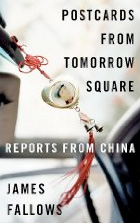 It’s Chinese New Year, or the spring festival as the Chinese call it, the start of a year of the Ox. It is also, by coincidence, Australia day, the equivalent of July 4th down there. But there is not much potential in comparing China to Australia so let’s look at China and India instead.
It’s Chinese New Year, or the spring festival as the Chinese call it, the start of a year of the Ox. It is also, by coincidence, Australia day, the equivalent of July 4th down there. But there is not much potential in comparing China to Australia so let’s look at China and India instead.
They are both enormous, with over a billion people each. Both are making huge strides towards modernity having opened up to the outside world in the last twenty years or so after having very protectionist planned economies with the usual unimpressive results.
Both China and India have huge disparities in income and standards of living, with a strong growing middle class but a large population of subsistence farmers and people living on the margins in cities. And there are lots of cities, over 100 cities of over 1 million people in China so most of them you’ve never heard of. You are much more conscious of the poverty in India because everything is mixed up there. You can be in, say, the Cadence buildings in Noida and you could be in California except that some of the women are in jeans and some are in saris. But walk outside and there are cattle wandering around, people drying dung and beggars everywhere. In China, the eastern cities are prosperous and the marginalized mainly live in the rural west so if you visit Beijing and Shanghai you won’t see them.
The other interesting major difference is the system of government. India is a bit like California with a thriving private sector and dysfunctional public administration. For example, every company has to have its own generators since the power companies are micromanaged by the politicians, can’t force anyone to pay their bills, have controlled prices and so can’t make any money and thus can’t invest. As the largest democracy in the world, those rural and illiterate poor are able to force bad policies in many areas.
 By contrast, China has a non-democratic government. But as a result it is perhaps easier for it to pursue sensible policies that would not necessarily be popular. So they have managed, originally in the south far from prying eyes in Beijing (which is in the north for those of you with no Chinese geography: bei is the Chinese for north) to have business friendly policies that have ignited a boom that has lifted more people out of poverty faster than anything in history. Deng Xiaoping, who is credited with orchestrating the change in policy, is a hero in that sense, despite the unacceptable blot of Tiananmen Square. To read a current viewpoint on various aspects of China, I recommend James Fallows’s articles in Atlantic Monthly, collected in the book Postcards From Tomorrow Square.
By contrast, China has a non-democratic government. But as a result it is perhaps easier for it to pursue sensible policies that would not necessarily be popular. So they have managed, originally in the south far from prying eyes in Beijing (which is in the north for those of you with no Chinese geography: bei is the Chinese for north) to have business friendly policies that have ignited a boom that has lifted more people out of poverty faster than anything in history. Deng Xiaoping, who is credited with orchestrating the change in policy, is a hero in that sense, despite the unacceptable blot of Tiananmen Square. To read a current viewpoint on various aspects of China, I recommend James Fallows’s articles in Atlantic Monthly, collected in the book Postcards From Tomorrow Square.
Because of their populations and a strong cultural emphasis on education as a means to advancement, both China and India produce a lot of well-trained people in any area such as engineering and computer science. India, of course, has the legendary Indian Institutes of Technology (IITs). Almost every successful Indian you meet in Silicon Valley is from one of the IIT (even Asok, the intern in Dilbert). China also graduates a huge number of engineers, There is some debate about the actual number and whether many of what Asia calls an engineer are really what we would call technicians. But it is pretty clear that both countries are graduating more real engineers than the US. This is not necessarily bad for the US. It is the dirty secret of Silicon Valley that so much of the engineering is done by people born outside of the US. When I ran a 200 person engineering group in the 1990s I estimated that over half were immigrants, starting with me. So it is all the more important that, as I said last week, the US have sensible immigration policies to make it easy for such people to come here (or stay here when they finish their advanced degrees).
Of course the current downturn will have a major impact on both countries. China, in particular, has to keep growing fast enough to make the country rich before it becomes old due to its inverted demographic that will be created by the one-child policy. It will be interesting to compare China and India and whether Lee Kuan Yew’s view that you need to liberate economically before liberating politically is proven right or wrong. China (and Singapore, of course) are exhibit A; India is exhibit B.
